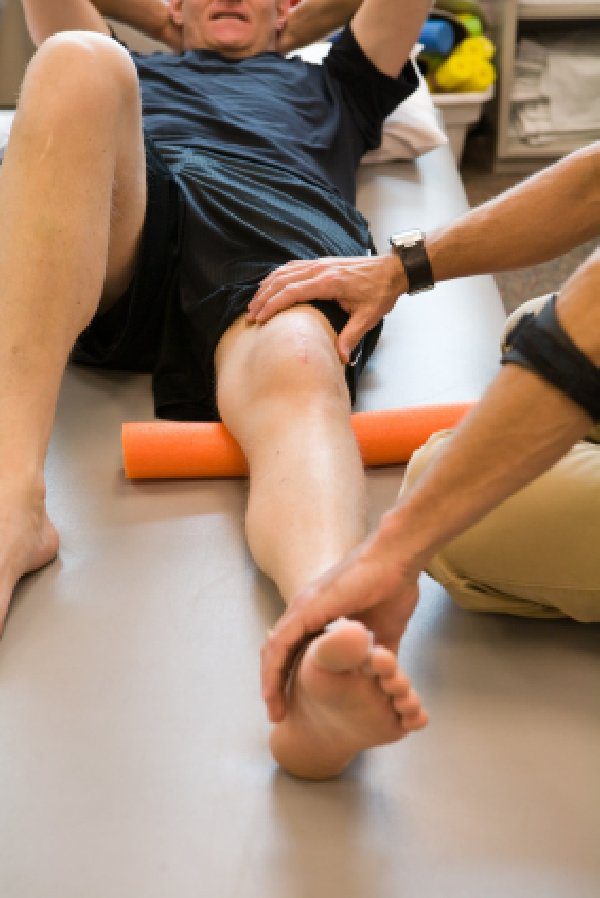By Justin Kotlarczyk, MSPT –


An acute rotator cuff tear is one that just recently occurred, often due to a trauma such as a fall or lifting a heavy object. Chronic rotator cuff tears are much slower to develop. These tears are often the result of repeated actions with the arms working above shoulder level—such as with ball-throwing sports or certain work activities.
People with chronic rotator cuff injuries often have a history of rotator cuff tendon irritation that causes shoulder pain with movement. This condition is known as shoulder impingement syndrome (SIS).
Rotator cuff tears can cause: shoulder weak-ness, pain over the top of the shoulder or down the outside of the arm, and loss of shoulder motion.
The injured arm often feels heavy, weak, and painful. In severe cases, tears may keep you from doing your daily activities or even raising your arm. People with rotator cuff tears often are unable to lift the arm to reach high shelves or reach behind their backs to tuck in a shirt or blouse, pull out a wallet, or fasten a bra.
Physical Therapy Without Surgery
Most of the time, your doctor will try to heal a rotator cuff impingement with nonsurgical treatments. Physical therapy is effectively used as a conservative treatment to relive the pain and repair the shoulder.
After you rest your arm and reduce any pain or swelling, your physical therapist will ask you to perform stretching exercises designed to restore your shoulder’s previous range of motion. Once your pain levels drop sufficiently, your therapist will add strengthening exercises that will make your shoulder joint more resistant to future damage.
Physical Therapy After Surgery
If conservative intervention doesn’t work, your doctor will likely recommend surgery to remove any bone spurs/arthritis and/or to relieve pressure on the rotator cuff tendons, or the doctor may repair the tendon. During surgery, your doctor will get a precise picture of your shoulder problems and pass his findings on to your physical therapist. Your therapist will then use this information to create a stretching and strengthening program that fits your specific shoulder condition. Typically, you will begin this program after a short period of arm immobilization. In most cases, you will gain pain-free function in your shoulder within two to four months, although some people don’t regain shoulder function until a full year has passed.
A physical therapist can educate you to reduce the risk of developing or exacerbating an existing rotator cuff tear, especially if you seek assistance at the first sign of shoulder pain or discomfort. To avoid developing or progressing a rotator cuff tear from an existing shoulder impingement, it is imperative to avoid future exacerbations. Your physical therapist can help you strengthen your rotator cuff muscles, train you to avoid potentially harmful postures, and determine when it is appropriate for you to return to your normal activities.
At Request Physical Therapy, our goal is to get you to return and maintain full natural movement throughout your day, using evidence based treatment techniques that focus on restoring function, reducing pain and preventing injury. We can work with your physician to help you achieve a healthy, active lifestyle and can help you manage your health over the long run.
Tips on Preventing Rotator Cuff Problems:
Avoid repeated overhead arm positions that may cause shoulder pain. If your job requires such movements, seek out the advice of a physical therapist to learn arm positions that may be used with less risk.
Apply rotator cuff muscle and scapular strengthening exercises into your normal exercise routine. The strength of the rotator cuff is just as important as the strength of any other muscle group. To avoid potential detriment to the rotator cuff, general strengthening and fitness programs may improve shoulder health.
Practice good posture. A forward position of the head and shoulders has been shown to alter shoulder blade position and create shoulder impingement syndrome.
Avoid sleeping on your side with your arm stretched overhead, or lying on your shoulder. These positions can begin the process that causes rotator cuff damage.
Avoid carrying heavy objects at your side; this can strain the rotator cuff.
Avoid smoking; it can decrease the blood flow to your rotator cuff.
Consult a physical therapist at the first sign of symptoms.
Call the office nearest you for a free consultation to learn how physical therapy may help you.
2722 Manatee Ave W, #2
Bradenton
(941) 744-9046
701 Manatee Avenue West, #103
Bradenton
(941) 567-6287
1922 53rd Avenue East
Bradenton
(941) 896-9768
506 4th Ave West
Palmetto
(941) 729-1800
 Southwest Florida's Health and Wellness Magazine Health and Wellness Articles
Southwest Florida's Health and Wellness Magazine Health and Wellness Articles

